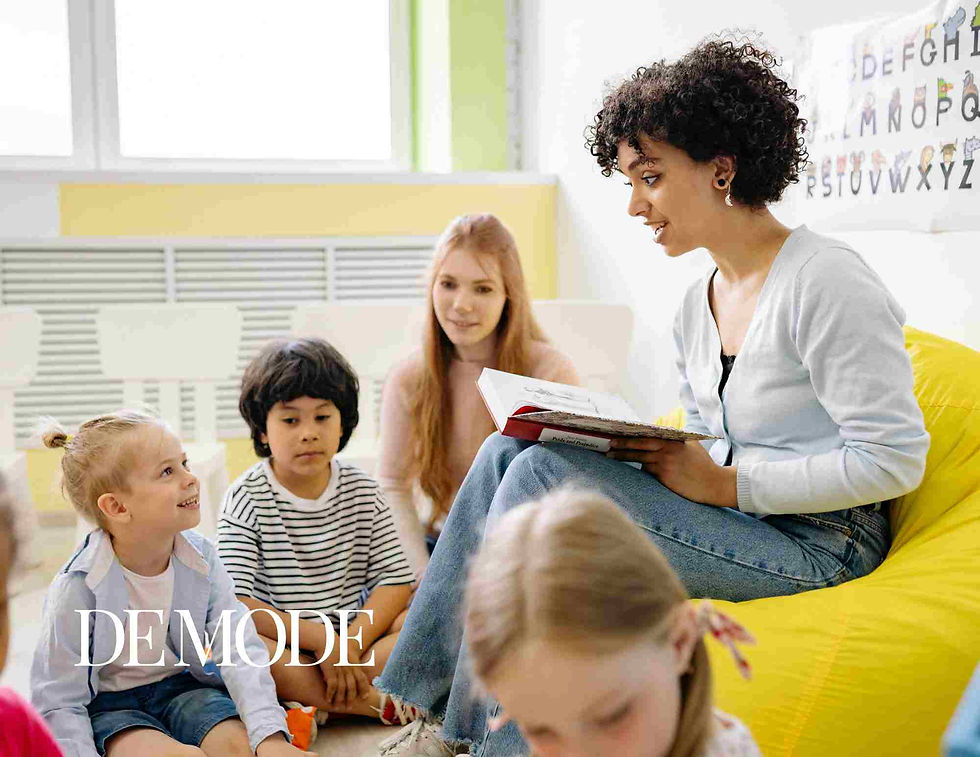ORIGINALLY PUBLISHED IN DE MODE | EDUCATION
Article Published on: 23RD MAY 2024 | www.demodemagazine.com
Teaching diversity by exploring different cultures in the classroom is a vital component of modern education. It not only broadens students' perspectives but also fosters an inclusive environment where every individual feels valued. This essay delves into the significance, methods, and benefits of integrating cultural diversity into classroom teaching.
Significance of Teaching Diversity
The globalized nature of today's society necessitates an understanding and appreciation of cultural diversity. In classrooms, students come from varied backgrounds, each bringing unique experiences and viewpoints. Recognizing and celebrating these differences prepares students to thrive in a multicultural world. It also combats stereotypes and prejudices, promoting a more harmonious and understanding community.
Teaching diversity aligns with educational goals of promoting critical thinking, empathy, and social responsibility. It encourages students to question biases, understand different worldviews, and develop a sense of global citizenship. Furthermore, an inclusive curriculum that reflects a range of cultures can enhance student engagement and motivation, as learners see their own cultures represented and valued.

Methods for Exploring Cultures in the Classroom
Incorporating Multicultural Literature: Literature is a powerful tool for exploring different cultures. Books, stories, and poems from diverse authors allow students to experience life from various cultural perspectives. For example, reading "The Absolutely True Diary of a Part-Time Indian" by Sherman Alexie can provide insights into Native American life, while "Persepolis" by Marjane Satrapi offers a glimpse into Iranian history and culture.
Celebrating Cultural Festivals: Integrating cultural celebrations into the school calendar is another effective method. Events like Chinese New Year, Diwali, Ramadan, and Hanukkah can be celebrated through classroom activities, food, music, and decorations. These celebrations not only educate students about different traditions but also create a festive and inclusive atmosphere.
Guest Speakers and Cultural Ambassadors: Inviting guest speakers or cultural ambassadors to share their experiences can make cultural education more tangible. These individuals can provide firsthand accounts of their cultural practices, challenges, and achievements. Such interactions can be deeply impactful, fostering a personal connection between students and the cultures they learn about.
Project-Based Learning: Engaging students in projects that explore different cultures can be highly effective. Projects can include research on a particular country's history, traditions, and current issues, culminating in presentations or cultural fairs. This hands-on approach not only deepens students' understanding but also hones their research and presentation skills.
Using Technology and Media: Technology offers numerous resources for exploring cultures. Virtual field trips, documentaries, and online cultural exchange programs can bring the world into the classroom. For instance, platforms like Google Arts & Culture allow students to explore museums and landmarks globally, providing an immersive cultural experience.
Benefits of Exploring Cultures in the Classroom
Enhanced Social Skills: Exposure to diverse cultures enhances students' social skills by teaching them to communicate effectively and respectfully with people from different backgrounds. This understanding is crucial in a multicultural society where collaboration and teamwork are essential.
Critical Thinking and Problem-Solving: Learning about different cultures encourages students to think critically about their own beliefs and assumptions. It fosters problem-solving skills as they consider multiple perspectives and find common ground. This skill is invaluable in both personal and professional contexts.
Empathy and Compassion: Cultural education promotes empathy and compassion by helping students understand the experiences and challenges faced by others. This emotional intelligence is fundamental to building a supportive and inclusive community, both within and outside the classroom.
Academic Achievement: Studies have shown that culturally responsive teaching can boost academic achievement. When students see their cultures represented in the curriculum, they feel more connected and engaged, leading to better attendance, participation, and overall performance.
Preparation for a Globalized World: Understanding cultural diversity is essential for success in a globalized world. Students who are culturally aware are better prepared for international travel, work, and collaboration. They become more adaptable and open-minded, which are key attributes in the 21st-century workforce.

Challenges and Considerations
While the benefits of teaching diversity are clear, it is not without challenges. Educators must be mindful of avoiding tokenism, where cultural elements are superficially presented without deeper context or understanding. It is essential to approach cultural education with sensitivity and respect, ensuring that representations are accurate and meaningful.
Another challenge is addressing the varied backgrounds and experiences of students within the classroom. Teachers need to be equipped with the knowledge and resources to handle complex discussions around race, ethnicity, and cultural identity. Professional development and training in cultural competency can support educators in this regard.
Additionally, curriculum constraints and standardized testing pressures can limit the time and resources available for cultural education. Schools must prioritize diversity as an integral part of the curriculum rather than an add-on.

Conclusion
Teaching diversity through exploring cultures in the classroom is crucial for fostering an inclusive, empathetic, and globally aware generation. By incorporating multicultural literature, celebrating cultural festivals, inviting guest speakers, engaging in project-based learning, and utilizing technology, educators can create a rich and dynamic learning environment. The benefits extend beyond academic achievement, enhancing social skills, critical thinking, empathy, and preparing students for a globalized world. Despite the challenges, the commitment to cultural education is a step towards a more understanding and interconnected society.